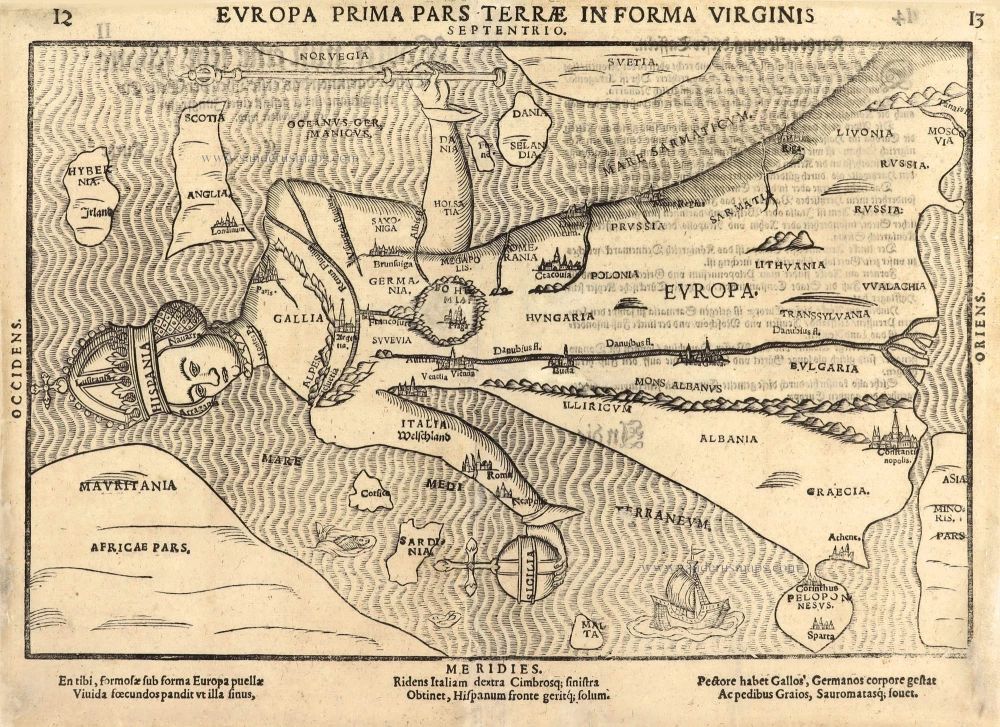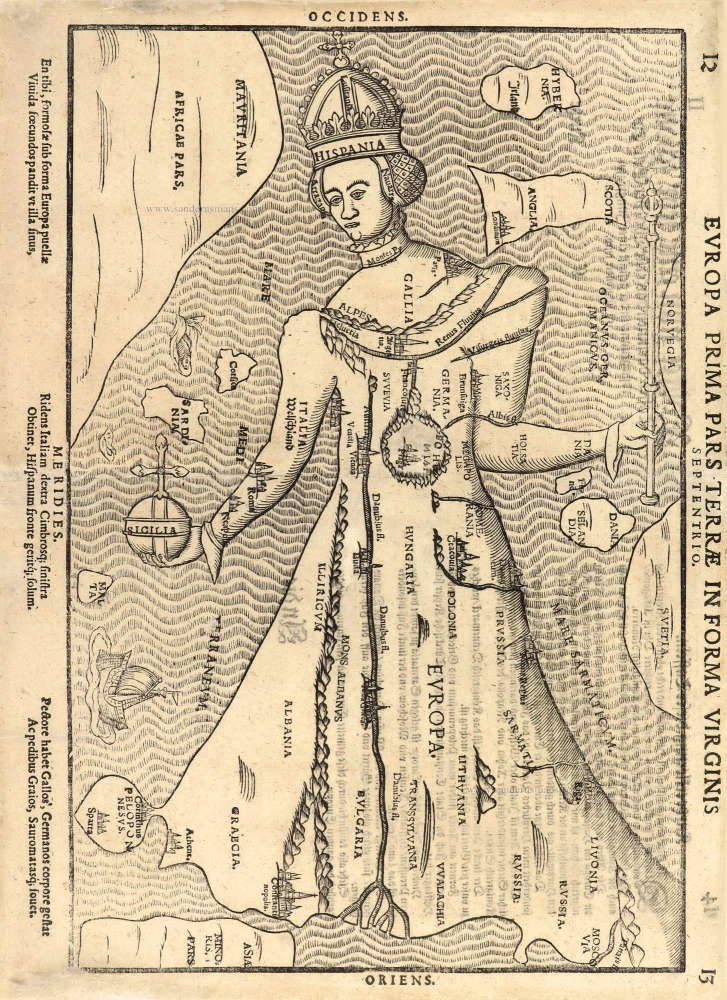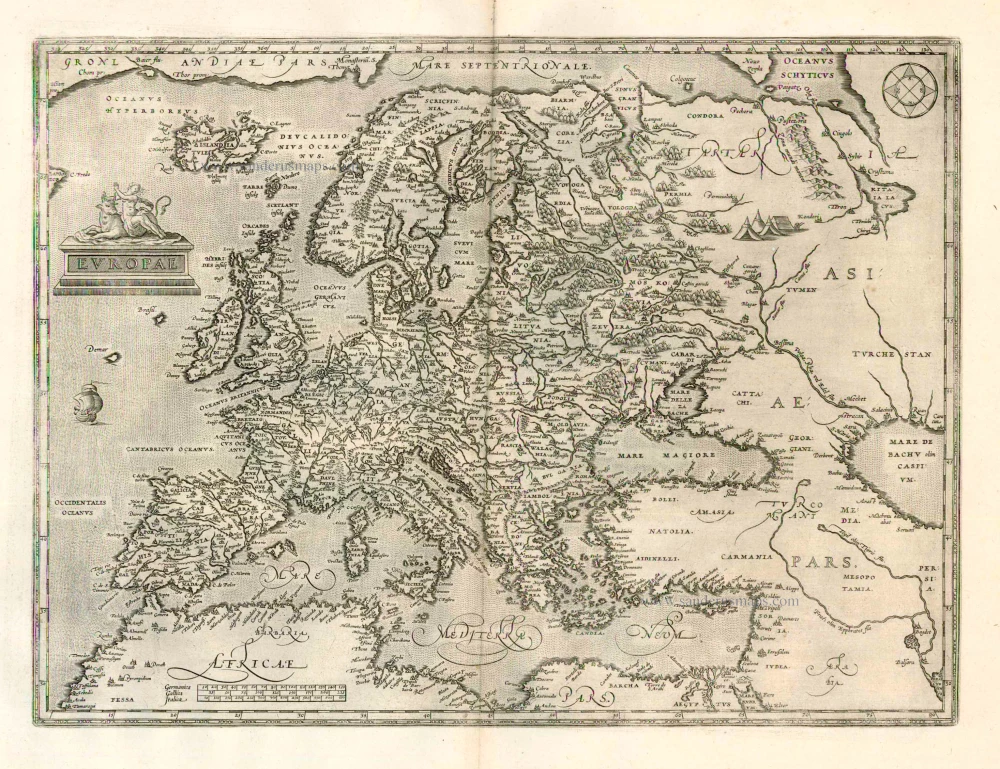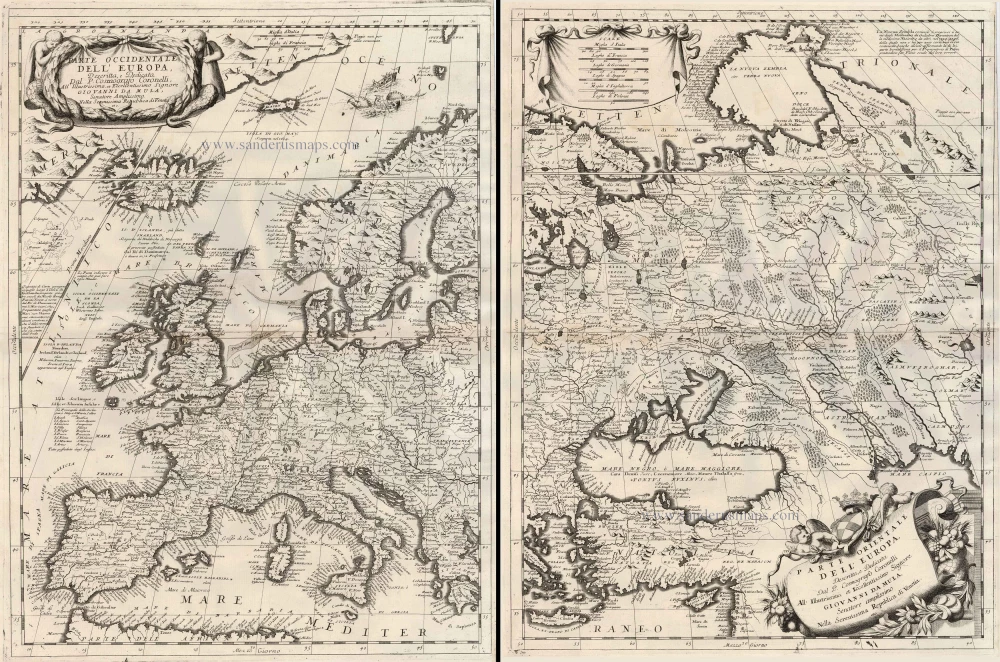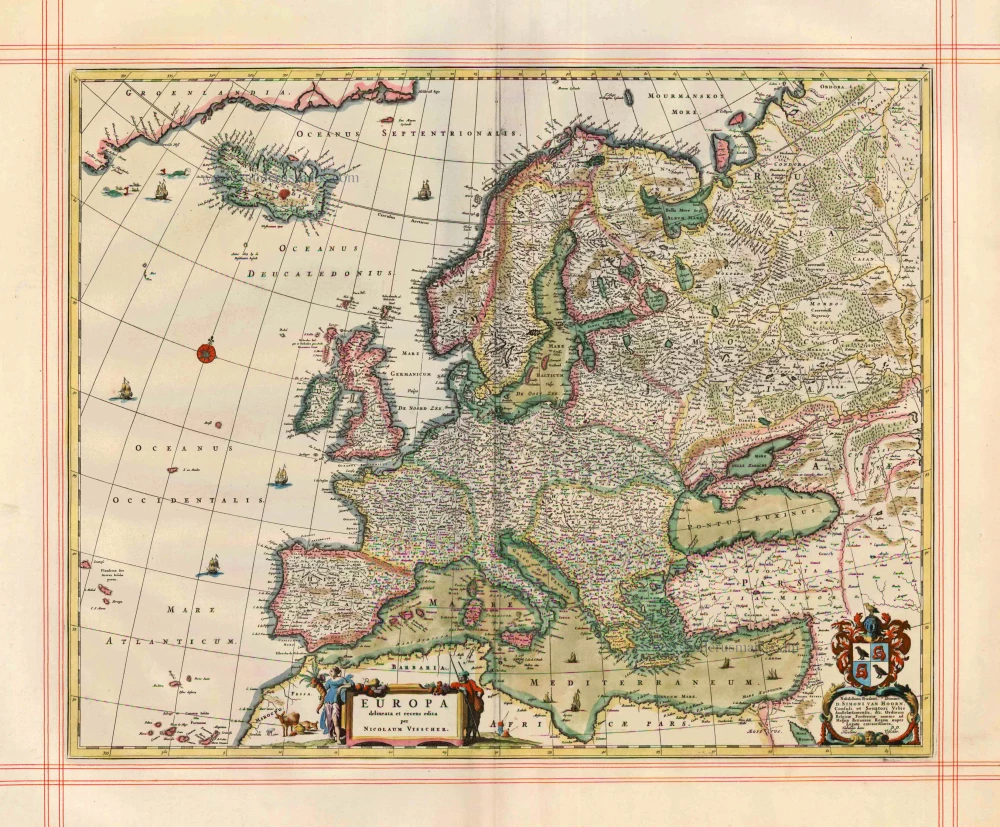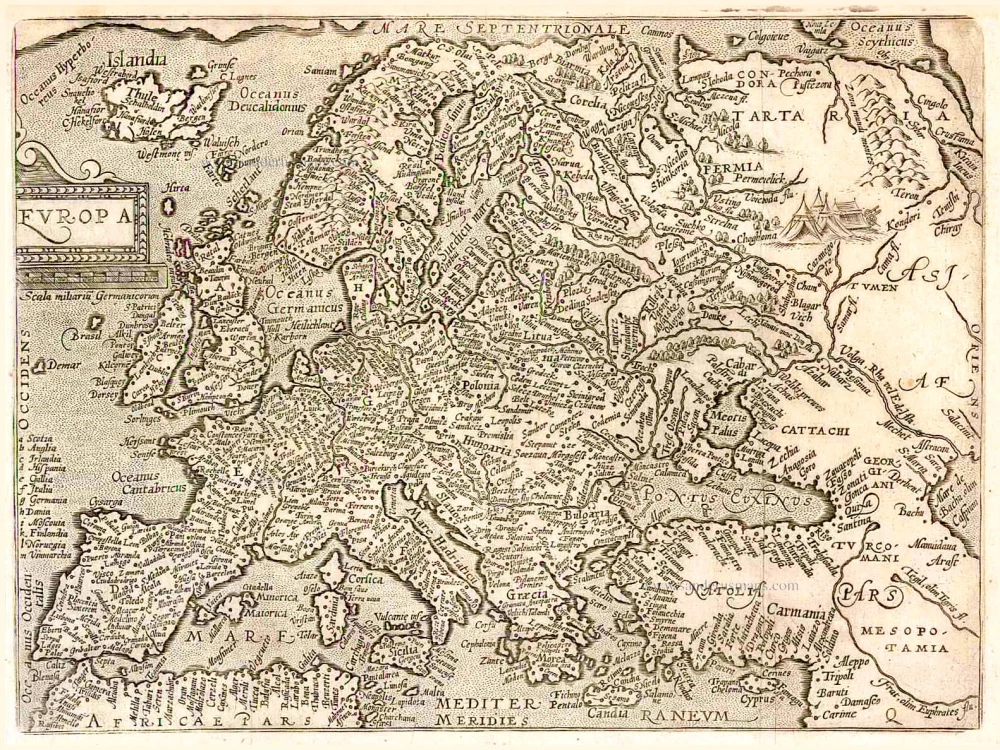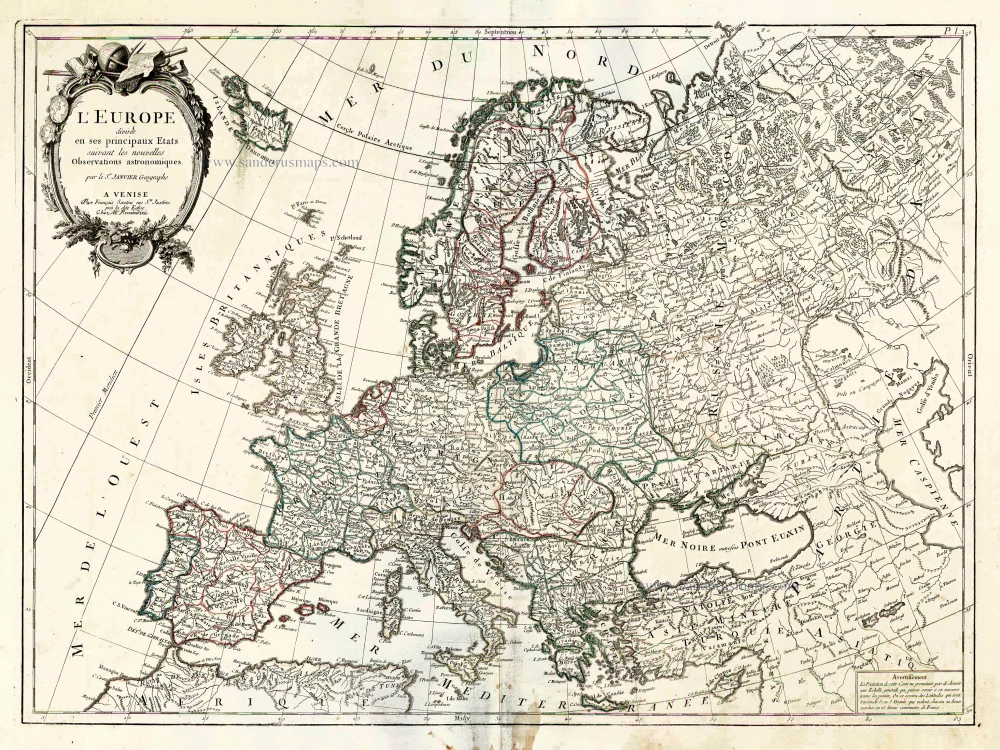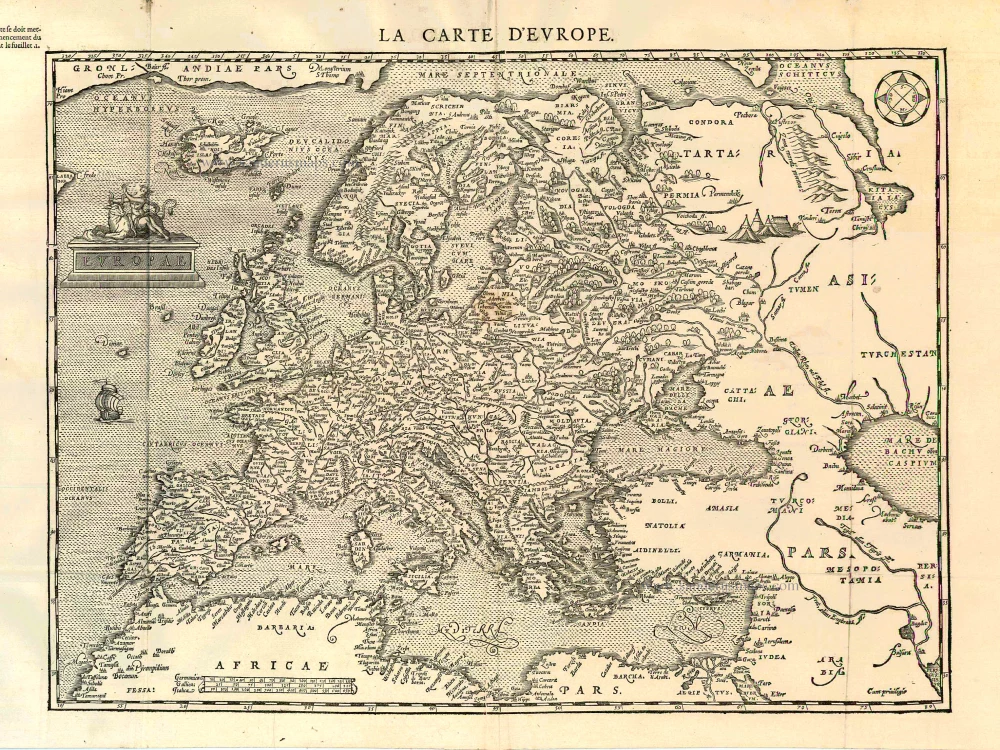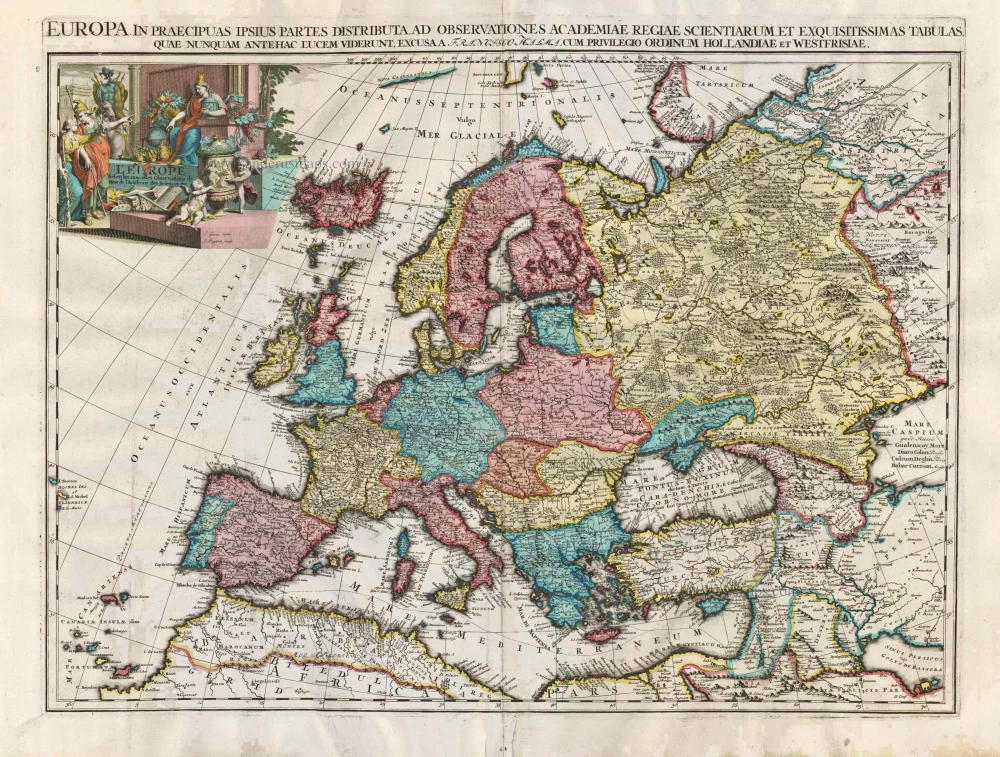Europa Virgo by Heinrich Bünting. 1587
The origin of the map 'Europe as a woman' lies in the mythical story of the robbery of the girl Europe by Zeus in the form of a bull, but in the sixteenth century, this story was used for political purposes. The original designer of this map, the Tyrolean Johannes Putsch, made this figure the symbol of the Habsburg power on the European mainland (first version in 1537). Putsch's original intention was to consider Bohemia as the heart, where Ferdinand of Habsburg had become king in 1526. Heinrich Bünting shifted the interpretation more to his native region because he interpreted the 'heart' of the woman as the heart of 'noble Germany and in particular my wonderful homeland Braunschweig'. Bünting came from Hannover and, being a Protestant, was certainly not a flatterer of the Habsburgs. The 'Europa Virgo' map was a great success and was copied many times.
Heinrich Bünting (Hannover, 1545-1606)
Heinrich Bünting was a protestant pastor and theologian. He was also a brewer in Hannover, and he was concerned with history and wrote a Braunschweigische Chronica in 1584. His main work was the popular Itinerarium Sacrae Scripturae, which after the first edition in Magdeburg in 1581 had many editions in German, Latin, Dutch, Swedish, Danish, Czech and English.
The book gave an overview of biblical geography based on the travel descriptions of various notable people from the Old and New Testaments. It contained ten woodcut maps, including three figurative maps: the world depicted as a cloverleaf with Jerusalem in the centre, Europe in the shape of a crowned woman, and Asia as the winged horse Pegasus.
Europa Prima Pars Terrae in Forma Virginis.
Item Number: 28288 Authenticity Guarantee
Category: Antique maps > Europe > Europe Continent
Old, antique map of Europe as a woman, by Heinrich Bünting.
Title: Europa Prima Pars Terrae in Forma Virginis.
Date of the first edition: 1587.
Date of this map: 1587.
Woodcut, printed on paper.
Size (not including margins): 355 x 235mm (13.98 x 9.25 inches).
Verso: German text.
Condition: Some shine-through of verso text.
Condition Rating: A
References: Van der Heijden (Europe), #42
From: Itinerarium Sacrae Scripturae. Wittenburg, 1587.
The origin of the map 'Europe as a woman' lies in the mythical story of the robbery of the girl Europe by Zeus in the form of a bull, but in the sixteenth century, this story was used for political purposes. The original designer of this map, the Tyrolean Johannes Putsch, made this figure the symbol of the Habsburg power on the European mainland (first version in 1537). Putsch's original intention was to consider Bohemia as the heart, where Ferdinand of Habsburg had become king in 1526. Heinrich Bünting shifted the interpretation more to his native region because he interpreted the 'heart' of the woman as the heart of 'noble Germany and in particular my wonderful homeland Braunschweig'. Bünting came from Hannover and, being a Protestant, was certainly not a flatterer of the Habsburgs. The 'Europa Virgo' map was a great success and was copied many times.
Heinrich Bünting (Hannover, 1545-1606)
Heinrich Bünting was a protestant pastor and theologian. He was also a brewer in Hannover, and he was concerned with history and wrote a Braunschweigische Chronica in 1584. His main work was the popular Itinerarium Sacrae Scripturae, which after the first edition in Magdeburg in 1581 had many editions in German, Latin, Dutch, Swedish, Danish, Czech and English.
The book gave an overview of biblical geography based on the travel descriptions of various notable people from the Old and New Testaments. It contained ten woodcut maps, including three figurative maps: the world depicted as a cloverleaf with Jerusalem in the centre, Europe in the shape of a crowned woman, and Asia as the winged horse Pegasus.

